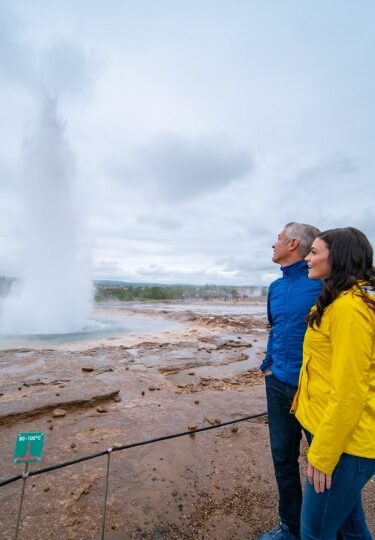Countless waterfalls, beautiful black sand beaches, volcanoes, soaring mountains, and geothermal hot spots make up Iceland’s natural landscapes. Seemingly every wonder exists in this incredible country aptly known as the ‘Land of Fire and Ice.’
Impossible beauty rests around every corner of this diverse island. Prepare to be sprayed by powerful waterfalls, gawk at glaciers, and marvel at deeply carved fjords—Iceland is Mother Nature at her very best.
These are some of the most breathtaking natural wonders in Iceland you can visit and everything you need to know about visiting them.
Golden Circle Route
Gullfoss
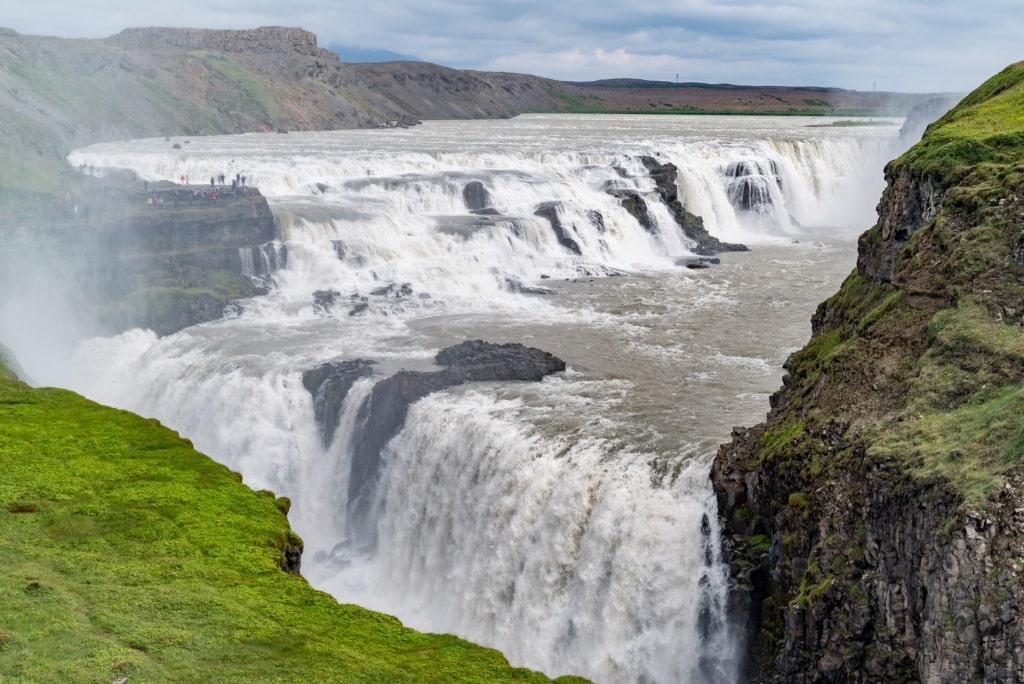
Gullfoss
“Foss” in Icelandic means waterfall, and with so many enchanting falls all over the country, it’s important to keep an eye out for road signs indicating one nearby. Perhaps one of Iceland’s most famed waterfalls, Gullfoss is located about an hour and a half from the capital city of Reykjavik.
The name means “golden falls,” and as one of the main stops within the well-known Golden Circle, it’s easily accessible, with parking facilities, a café, restrooms, and a gift/convenience store. The dramatic thundering falls flow via two cascades, dropping 105 feet into the deep Gullfossgjúfur canyon, putting on quite the Iceland nature show.
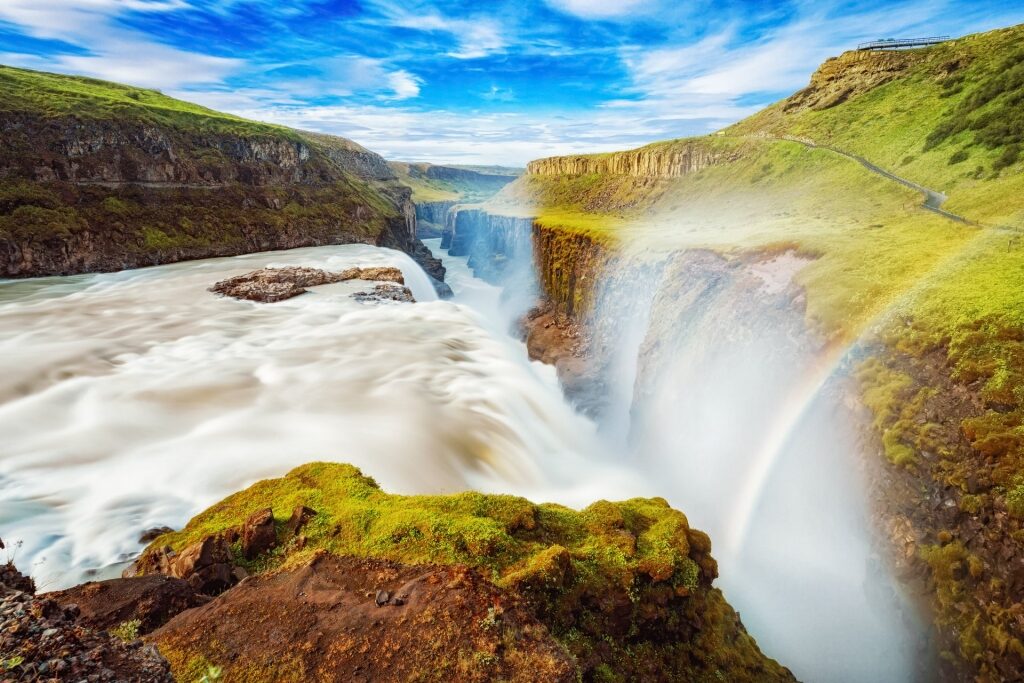
Gullfoss
If the conditions are just right, and you wish hard enough, you might even be granted the appearance of a rainbow.
Thingvellir National Park
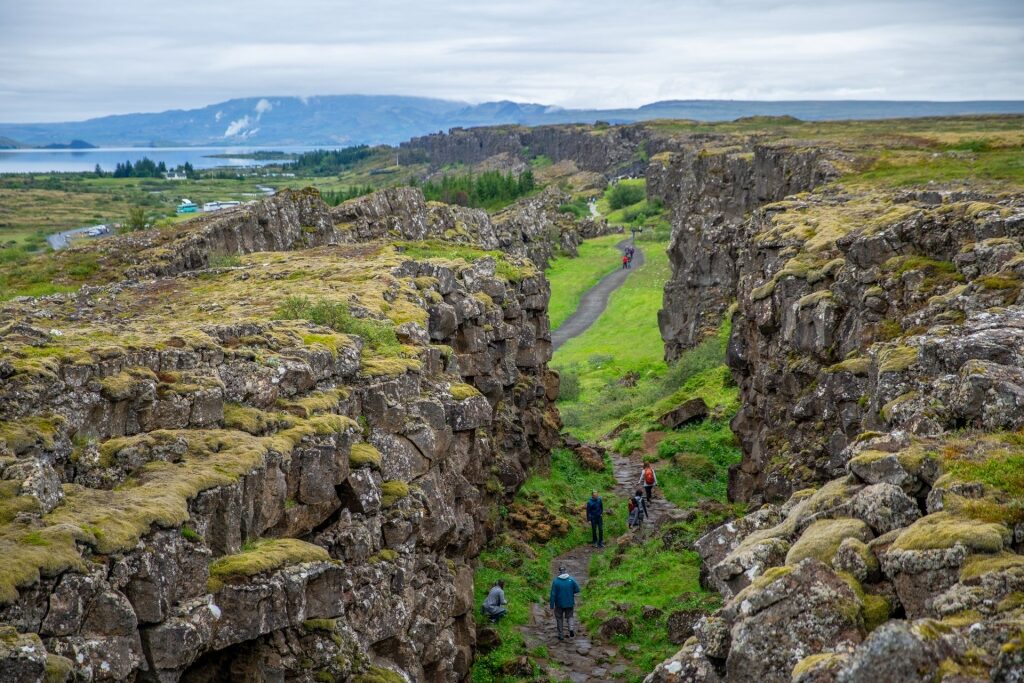
Thingvellir National Park
Iceland’s first national park and historical site where the Icelandic Parliament used to meet, Thingvellir is located approximately 45 minutes from Reykjavik. As one of the most beautiful places in Iceland, the park is a highlight along the famous Golden Circle route.
Ancient ruins can be found amongst this UNESCO World Heritage Site, but perhaps the most fascinating feature is the position of the park itself and the ability to see the continental drift. Thingvellir is perched upon two tectonic plates, North America and Eurasia, and split with a canyon. This beautiful gorge is filled with water and a very popular destination for the unique experience it offers, like snorkeling or diving between two continents in the crystal-clear water.
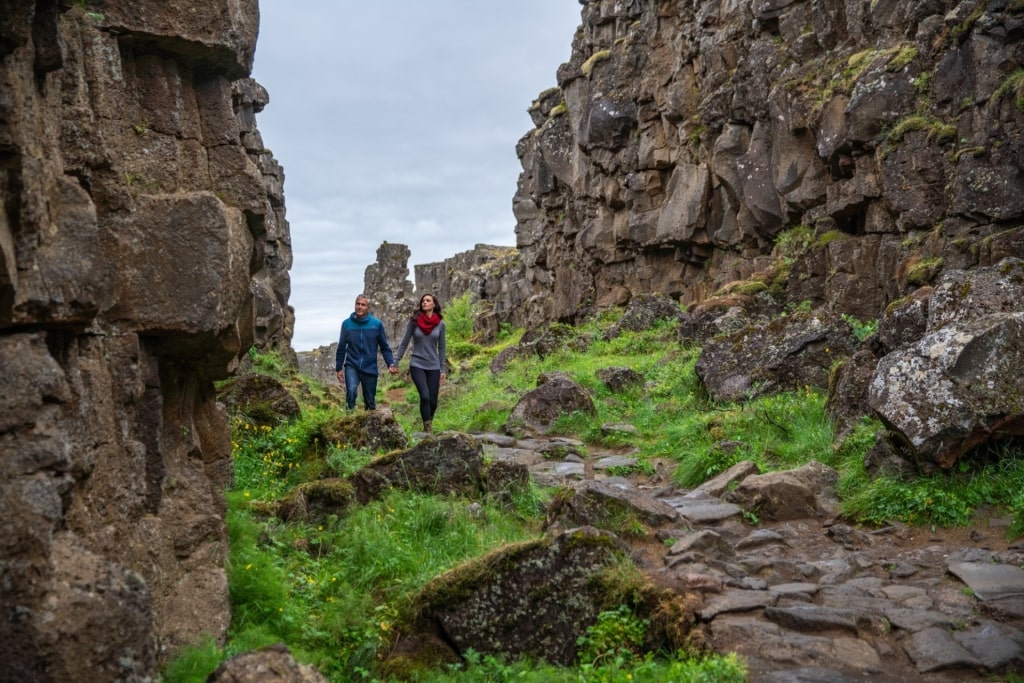
Thingvellir National Park
There’s plenty of hiking to be done in Thingvellir with several routes and information available at the well-equipped visitor center, where you’ll find restrooms, a café, a gift store, and a short exhibition on this storied national park.
Geysir Hot Springs
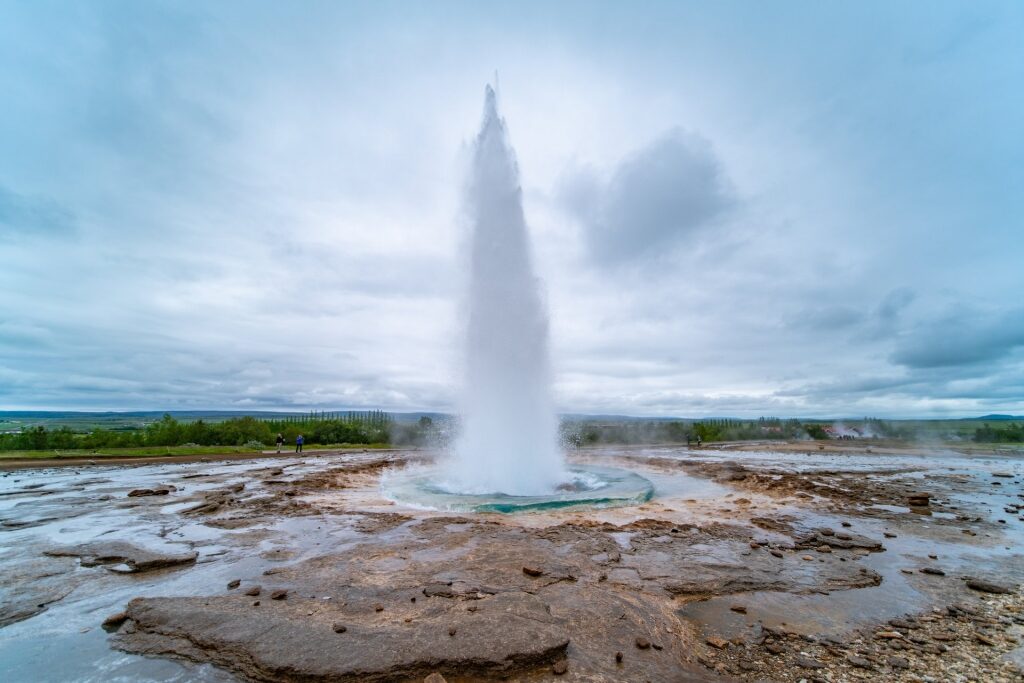
Geysir Hot Springs
Found along the well-traversed Golden Circle Route, Geysir is one of those Iceland natural wonders that you have to see for yourself. Situated in the geothermal Haukadalur Valley, it’s possible to visit on a day trip from Reykjavik in combination with the other attractions along the Golden Circle, Thingvellir National Park, and Gullfoss.
Although Geysir is currently inactive and only erupts every few years or so, the area is also host to Strokkur, which shoots water up to 130 feet in the air about every 10 minutes. Water flowing from the Langjokull Glacier acts as the water source, while the lava rocks and magma work as the heat source to create boiling hot water for this epic show.
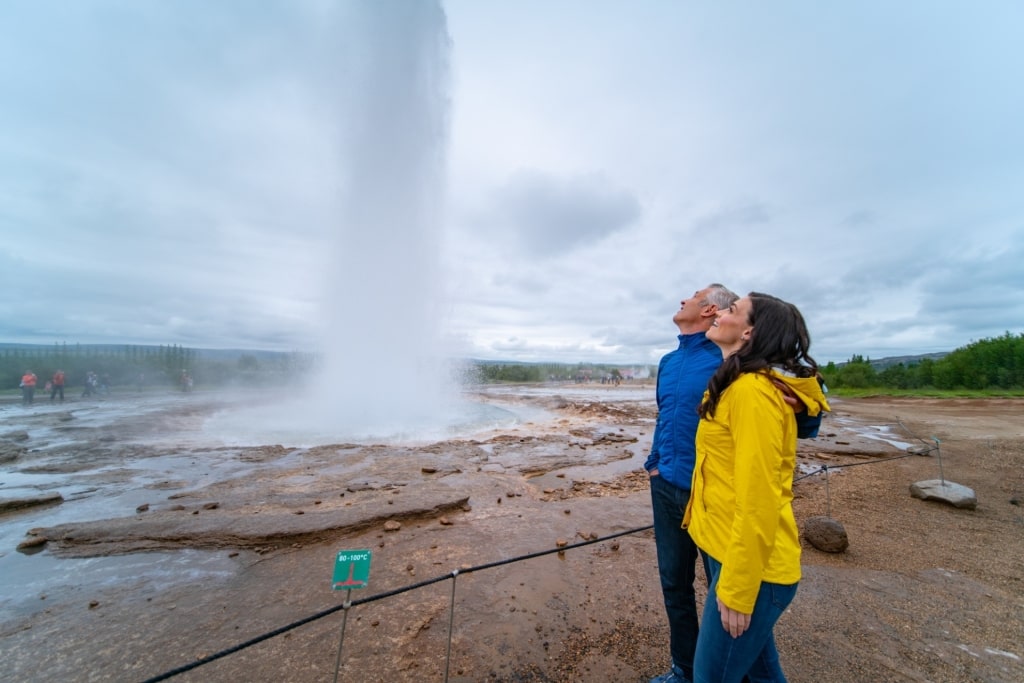
Geysir Hot Springs
Watch as the hot water bubbles at the surface, signaling the upcoming eruption and providing an exciting Iceland nature experience.
Geysir is easily accessible and there is a parking lot right by the road. There’s also a café and a gift shop, so you can warm up with a hot soup or cake and coffee after watching water erupting from the ground.
Majestic Waterfalls
Godafoss
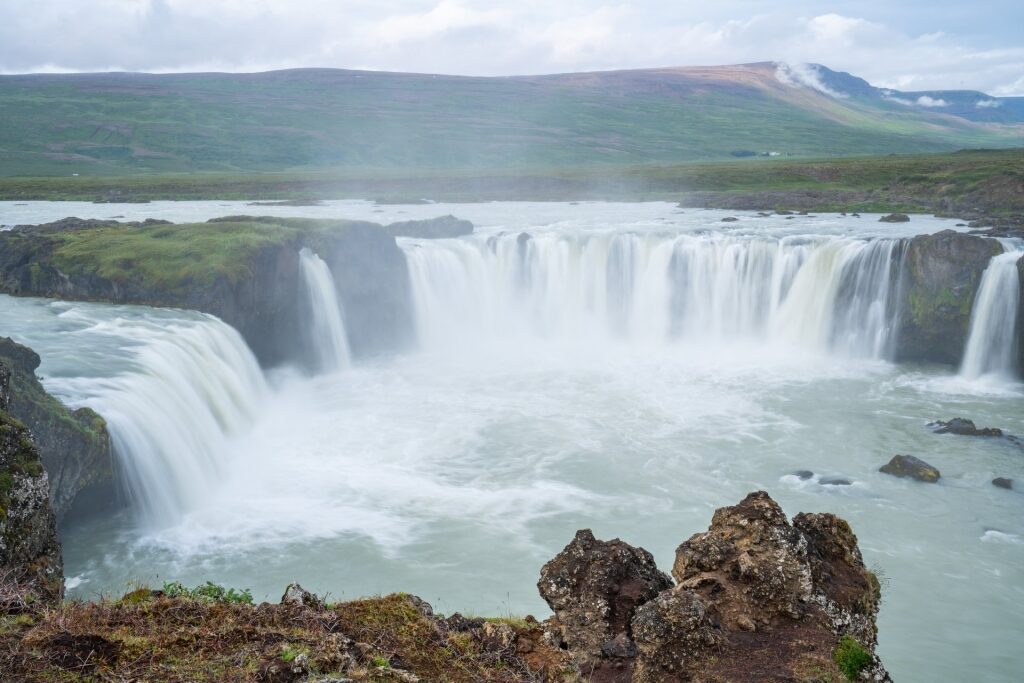
Godafoss
Yet another spectacular waterfall in Iceland’s astounding world of nature, this impressive site in the northern region of the country is part of the Diamond Circle and easily accessed from Ring Road, or Route 1. It’s possible to visit either side of the falls via simple walking paths that don’t require much effort and viewing platforms where you can gaze upon the waterfall’s splendor.
Godafoss means “waterfall of the gods,” stemming either from old legends or the beauty of the wide set of falls—you decide.
Godafoss is a short drive, around 30 minutes, from Lake Mývatn and Mývatn Nature Baths and they can easily be combined on a day-long visit to the area.
Barnafoss

Barnafoss
This waterfall in the western part of the country, about an hour and a half from Reykjavik, is a beautiful example of Iceland’s nature. The waters of Barnafoss wind over lava rock, flowing from the Hvita River in the form of several smaller falls, adding to the distinctive character.
The contrasting vibrant blue water paired with the dark rocks makes for an exquisite scene. Easily accessible from the parking area, there are viewing platforms available to comfortably take in the scenery.
Seljalandsfoss
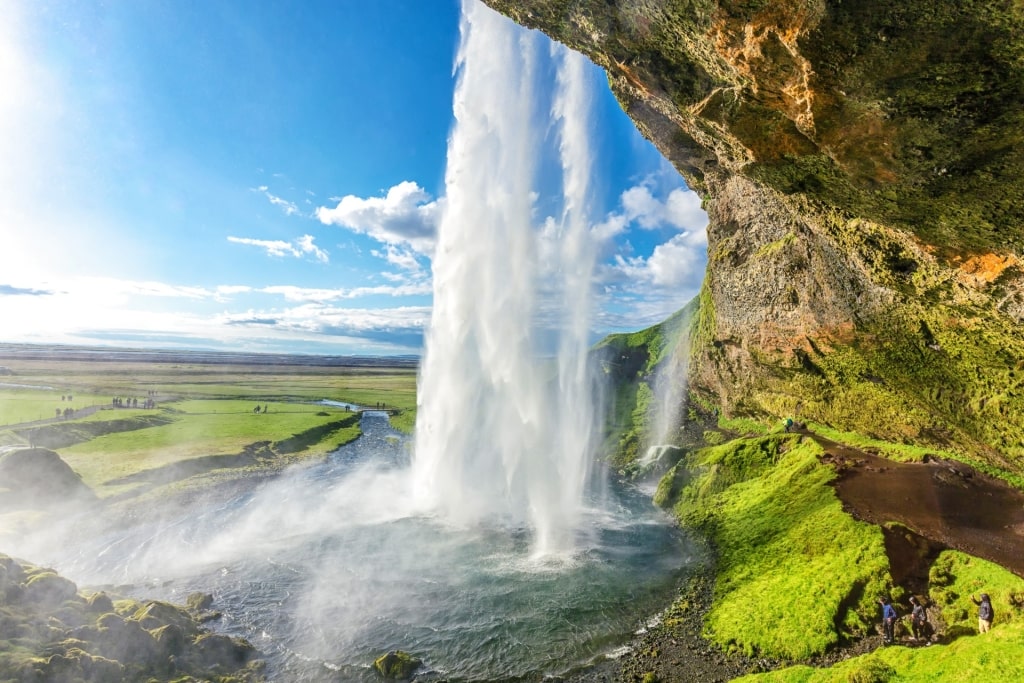
Seljalandsfoss
Seljalandsfoss, one of Iceland’s most famous waterfalls, is a must-see. Located on the south coast about an hour and a half from Reykjavik, it’s easily reached via the Ring Road near the village of Hella. Other than being something out of a dream, this waterfall is unique in that you can venture behind it. Make sure to bring a waterproof jacket if you want to get close—you will get splashed!
This almost 200-foot cascade drop is glacier-fed by pristine water from the nearby Eyjafjallajökull Glacier. Travel down the path just a little further to see another impressive waterfall. Gljufrabui is in a cave, so just when you thought it couldn’t get any more amazing, Iceland’s nature raises the bar again.
Helgufoss
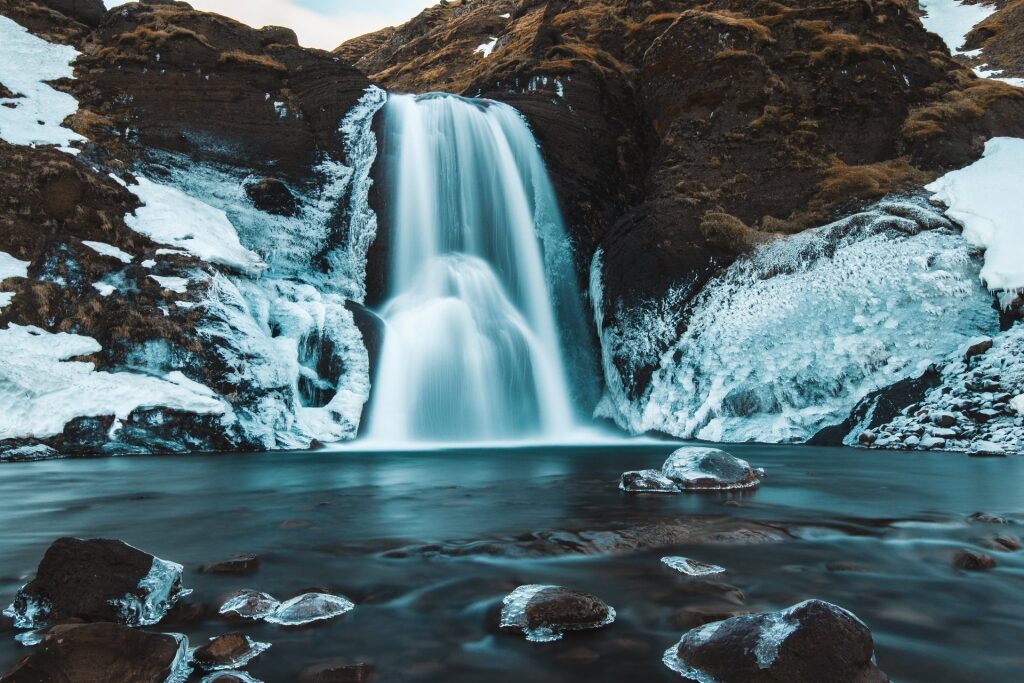
Helgufoss
Tucked in the Mosfellsdalur Valley about a half an hour outside the capital city of Reykjavik, Helgufoss is a relatively unknown but tranquil waterfall. Discover this gem at the start of the Laxness Trail, or Poet’s Path named after the local Nobel Prize-winning writer, Haldór Laxness. The path winds along the Kaldá River for a peaceful walk with little effort to the 39 feet tall cascade—you might even enjoy it all to yourself.
Helgufoss is the best waterfall to visit in Iceland for an effortless day trip from Reykjavik, as part of a tour of the Golden Circle route. At the parking lot for Helgufoss there’s a useful information board with a map and information on the area.
Hraunfossar
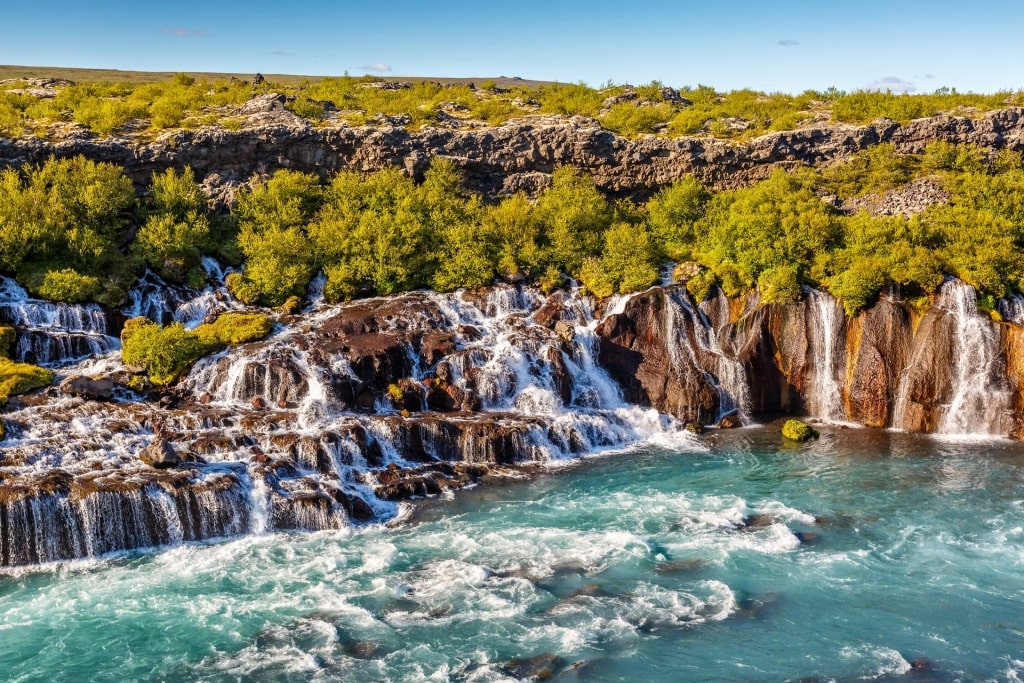
Hraunfossar
The next-door neighbor to Barnafoss, this western Iceland waterfall is an easy trip from Reykjavik. Meaning “Lava Falls,” Hraunfossar’s streaming falls stem from the Hvita River and hold a rich folklore history of being the home to trolls.
If you have some extra time, the village of Reykholt is close by as well as the longest cave in Iceland, Víðgelmir. It’s possible to venture into the lava cave to see the stalactites and stalagmites, another fascinating natural wonder in Iceland.
Dynjandi Waterfall
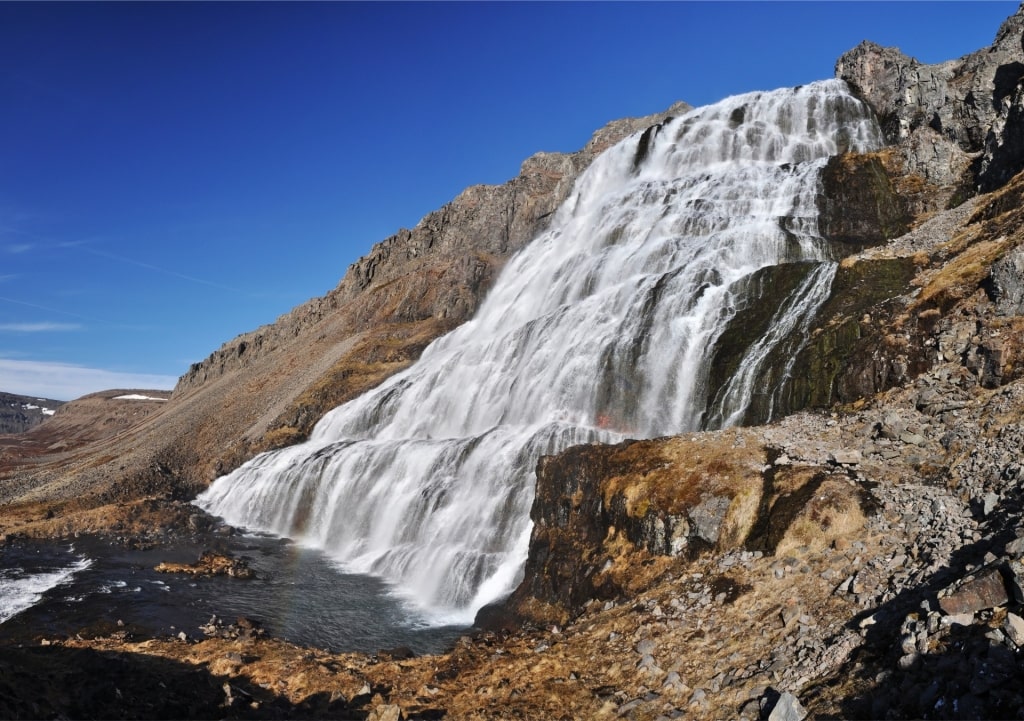
Dynjandi Waterfall
Travelers to Iceland’s remote Westfjords are rewarded with Dynjandi, the largest waterfall in the region and one of the country’s most breathtaking.
Dynjandi is roughly a 50-minute drive south of Isafjordur, a town on the small Skutulsfjord. When you arrive, you’ll see Dynjandi’s 330-foot cascade from the parking area. From here, follow the gravel path, passing the seven smaller waterfalls as you ascend the slight hill. If you have mobility issues, you can easily admire the waterfall from the fjord.
As you amble by the smaller waterfalls, stop for photographs and read the information boards along the route. It takes around 20 minutes, depending on your pace, to reach the base.
Thermal Springs
Blue Lagoon

Blue Lagoon
Southern Iceland’s most famed natural attraction, the Blue Lagoon is situated on the Reykjanes Peninsula and puts that mystical geothermal activity to good use. Indulging in this natural spa treatment will have you feeling like relaxed royalty.
As if the light blue coloring of the water wasn’t appealing enough, the refreshing and skin-healing properties of the mineral-rich lagoon take the cake. After a day exposed to Iceland’s ever-changing and sometimes harsh weather, a dip in the warm, soothing waters of the Blue Lagoon is just what the Viking doctor ordered.
With soaking in the numerous pools and hot springs throughout Iceland being a big part of the culture, you’ll be checking one of the most iconic dips off your list with the Blue Lagoon.
Forest Lagoon
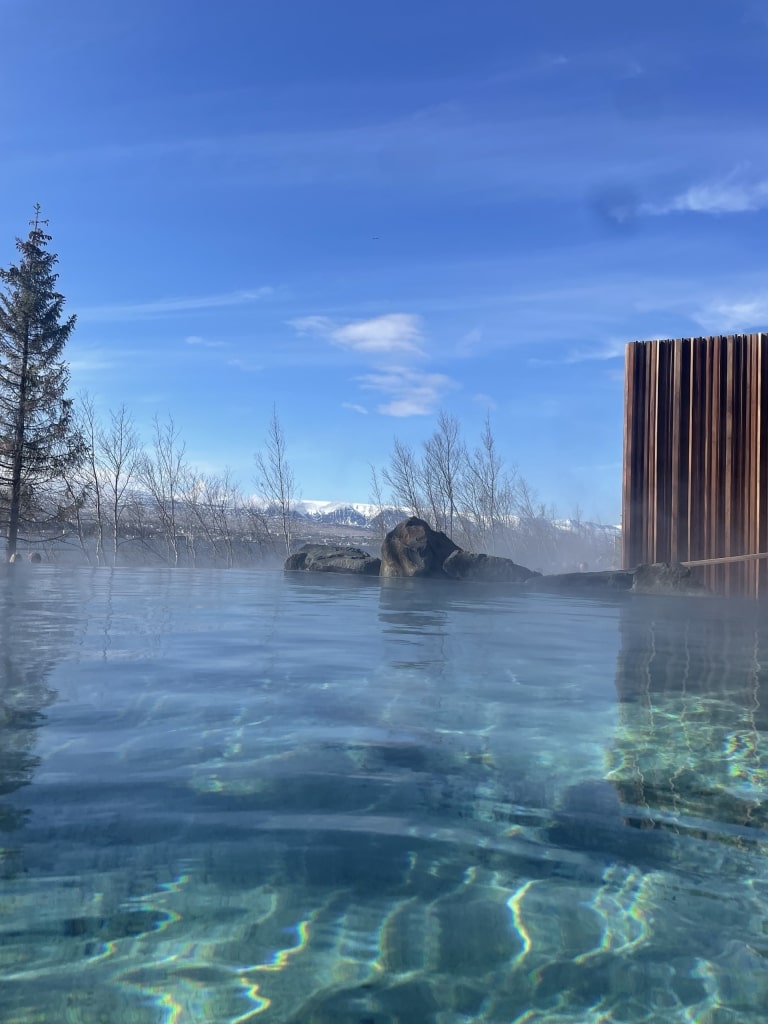
Forest Lagoon
Pay a visit to the calming Forest Lagoon, a five-minute drive from Akureyri city center in northern Iceland. As you might expect, given its name, this geothermal pool is surrounded by birch and pine forest, which is a rarity in a country known for having so few trees.
Overlooking the gorgeous Eyjafjordur, the modernist building has been designed to feel immersed in Icelandic nature. Bathe in the two pools, with one kept at around 98°F, with two swim-up bars, and a smaller pool kept to a blissful 104°F.
Facilities also include a cold pool, kept to around 51°F, for guests who enjoy hot and cold therapy, a dry sauna, and a bistro. Hop on the free shuttle bus from Akureyri’s center with hourly departures during summer. Towels and robes are not included so you will need to take your own.
Glacier Adventures
Langjokull Glacier
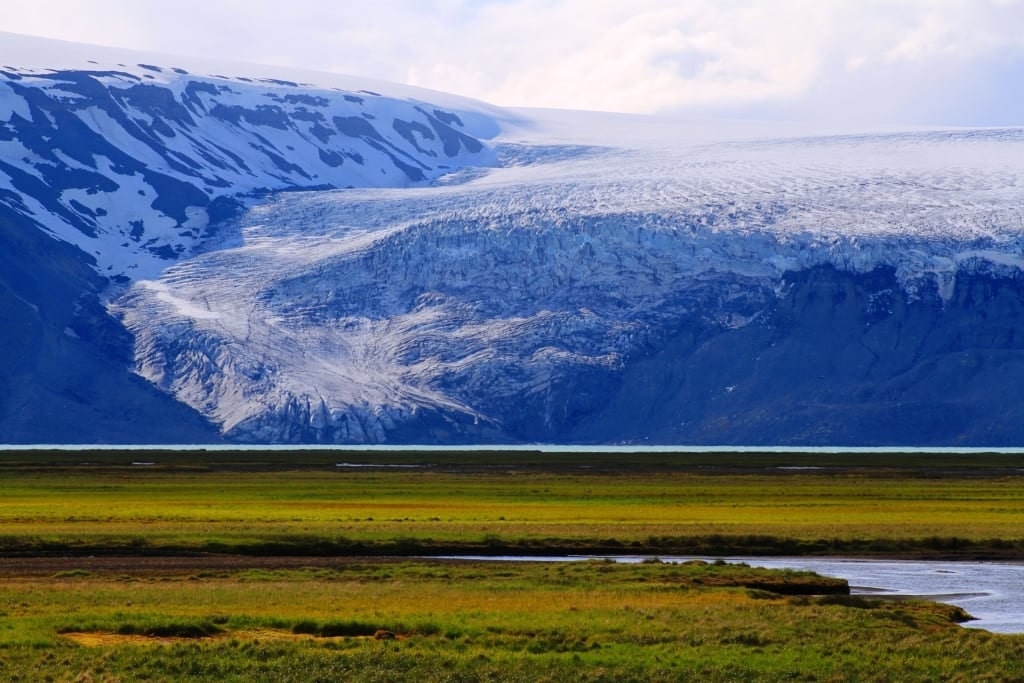
Langjokull Glacier
Deemed the “long glacier,” Langjökull in the highlands region to the east of Reykjavik is a popular site for exploring one of Iceland’s most fantastic natural wonders. This vast glacier feeds the Hvita River, which in turn feeds the dramatic Gullfoss and Langjökull’s underground meltwater forms many of the springs in Thingvellir National Park.
At 31 miles long and 12 miles wide at some points, there is much to explore. To best experience the glacier, venture inside via a manmade tunnel or explore the ice caves on snowmobiles or Super Jeeps.
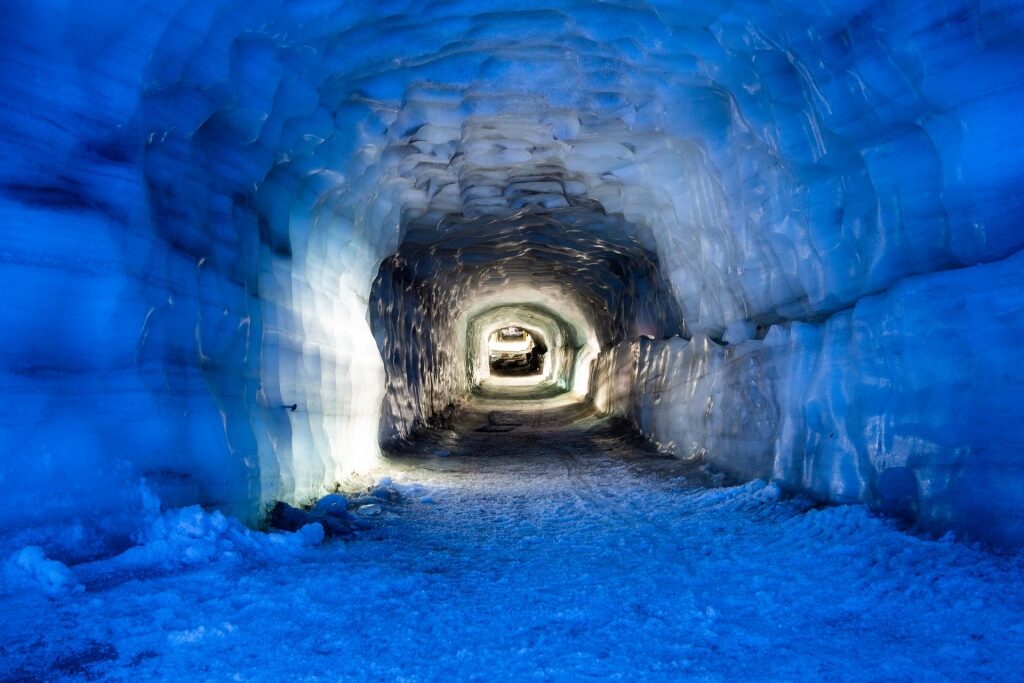
Langjokull Glacier
Into the Glacier tours offer a freezing-cold but spectacular window into Icelandic nature, with the tunnel of compressed white-blue ice streaked with black lines from the Eyjafjallajokull volcanic eruption in 2010. Wrap up warm with waterproofs and thermal layers if you plan to join a tour inside the Langjokull glacier.
Volcanic Marvels
Eyjafjallajokull Glacier
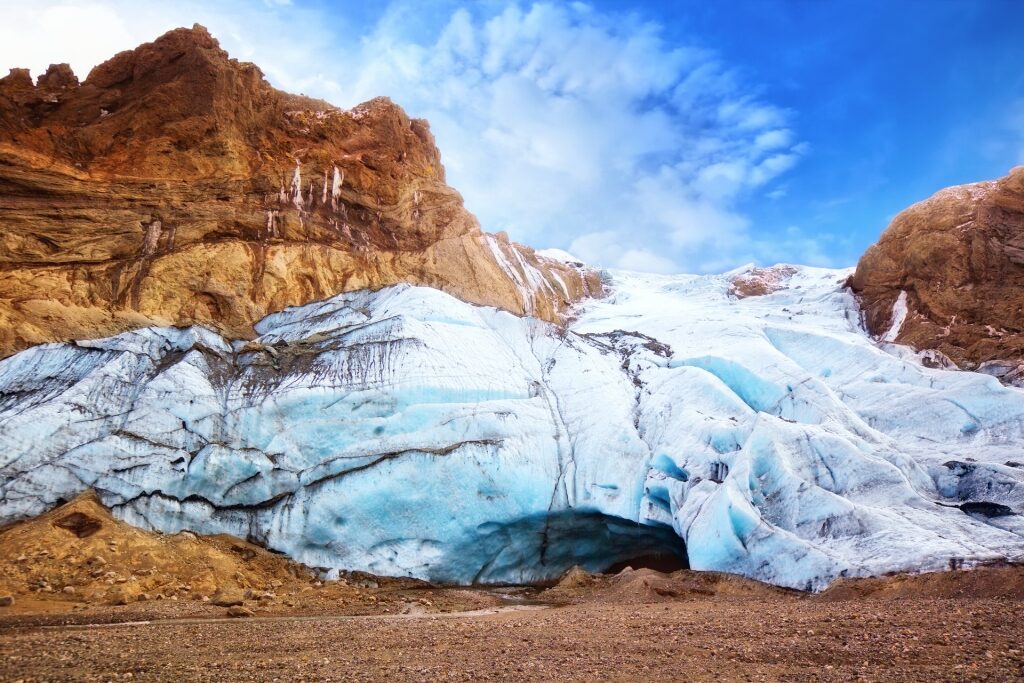
Eyjafjallajokull Glacier
This southern Icelandic natural marvel is an ice cap that covers 100 square kilometers with the caldera of a volcano underneath. Hike the glacier with a guide, snowmobile, embark on a super-Jeep tour, or tackle one of the longer treks like the Fimmvorduhals trail to get an up-close view of the icy splendor.
For a different perspective, a scenic flight over the Eyjafjallajokull Glacier and surrounding areas will have you gasping in awe at the volcanic and glacial scenery. Taking in the incredible landscape from above will create a whole new level of understanding the origin of Iceland’s nickname, “The Land of Fire and Ice.”
Krafla Lava Fields
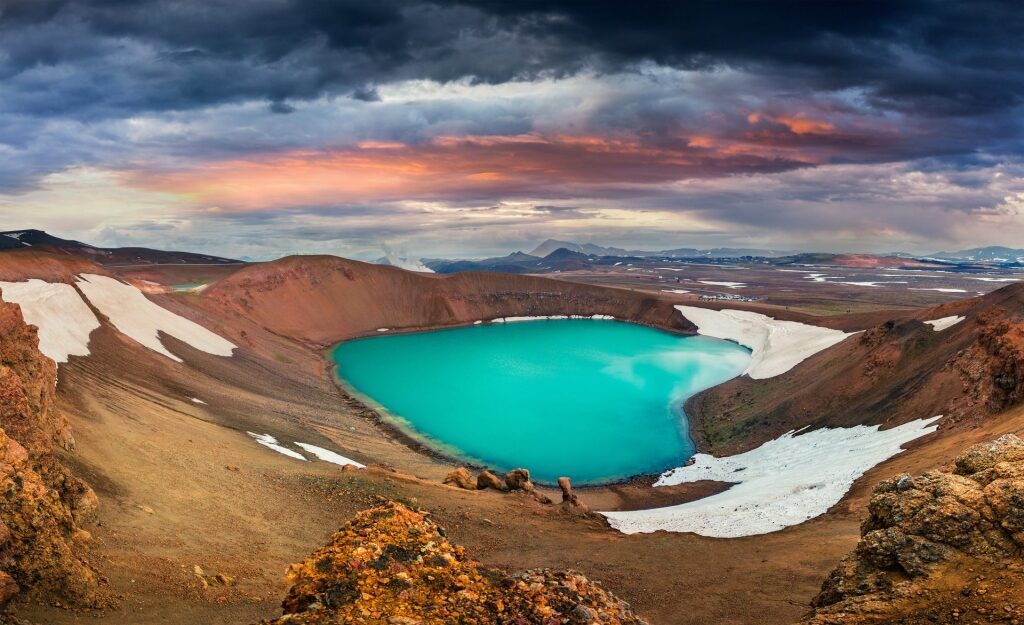
Krafla Lava Fields
Near Lake Myvatn in the northern region of Iceland, the Krafla caldera is one of the country’s wonders of nature. Feel like you’re an explorer on the moon as you walk one of the trails in the midst of craters, cracked earth landscapes, burbling mud pockets, and steam rising all around.
Making your way along the rim of the crater, you’ll be rewarded with a view of the Viti Crater lake showing off its turquoise-colored water. Visit the Krafla Power Station if you’re interested in learning about geothermal energy in Iceland and how they use it to make the country green and sustainable.
Bláfjöll Mountains
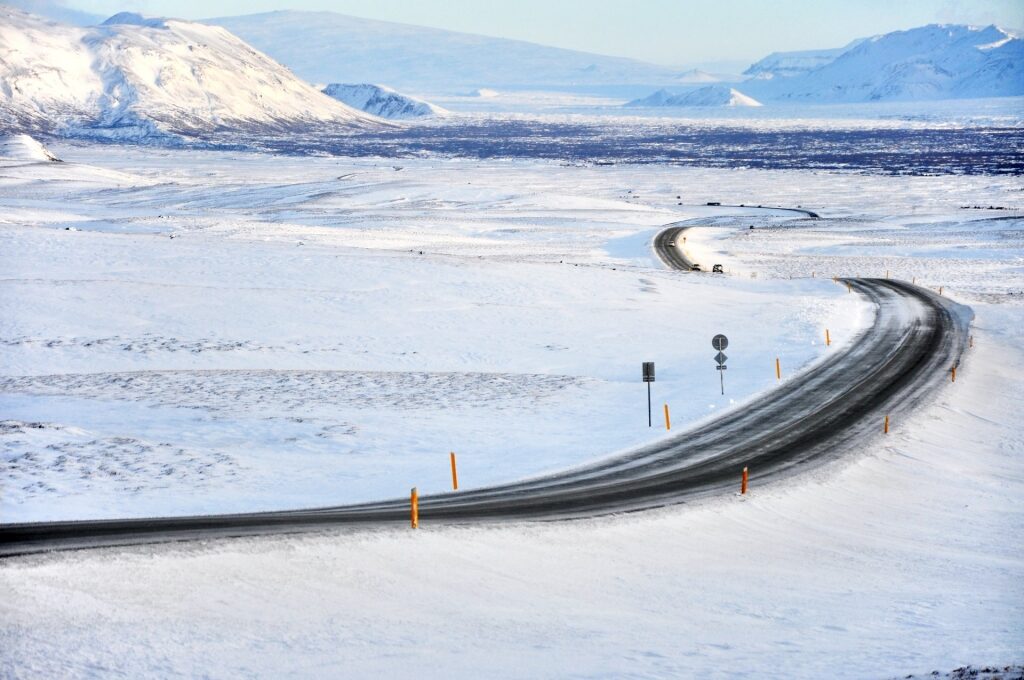
Bláfjöll Mountains
Otherwise known as the Blue Mountains, this southwestern range is a popular spot for cave exploring, skiing, and hiking in Iceland, all within close proximity to Reykjavik. One of the well-known lava caves, Leiðarendi, is an interesting natural tunnel formed from two volcanic eruptions. Marvel at the contrasting moss growing amongst the black rock landscape and pinch yourself when you realize you’re inside a volcano!
Another option for enjoying the mountain backdrop is to embark on a horseback riding adventure with the gorgeous Icelandic horses. Trotting along the Icelandic countryside with the Bláfjöll Mountain backdrop will be a highlight of your trip.
Mount Helgafell Volcano
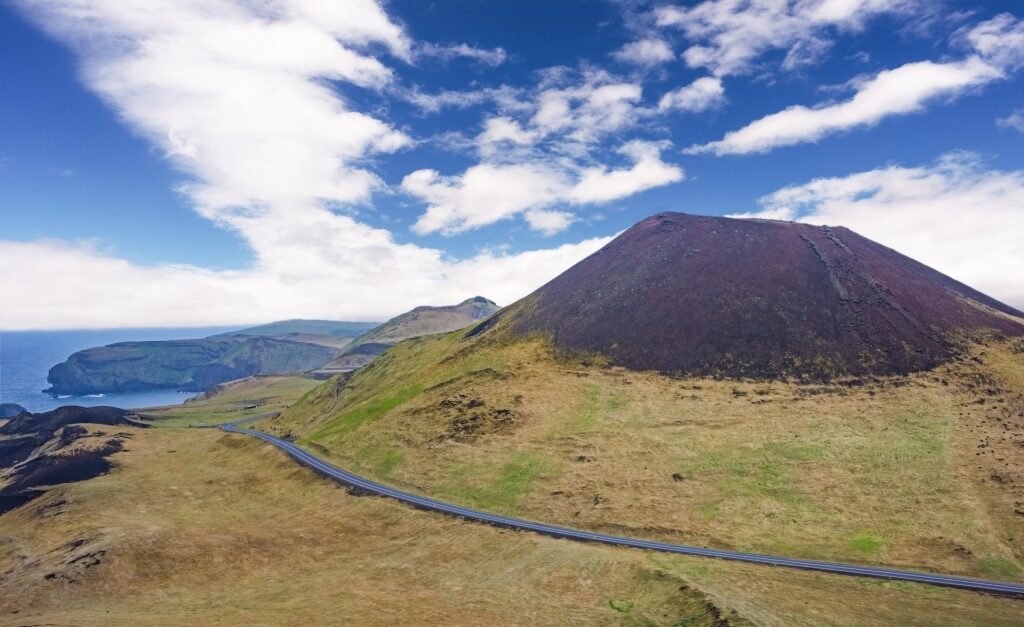
Mount Helgafell Volcano
North of Reykjavik on the amazingly beautiful Snæfellsnes Peninsula, a historical and sacred hill with a background rooted in folklore awaits. Legend has it that if you hike the mountain as a first-timer and don’t speak a word or look back along the way, then you’ll get three wishes granted.
The walk to the top takes about 15 minutes, where you’ll get views of Breiðafjörður Bay and its islands, see the village of Stykkishólmur, and encounter the ruins of a prayer chapel.
Famous Lakes
Lake Myvatn
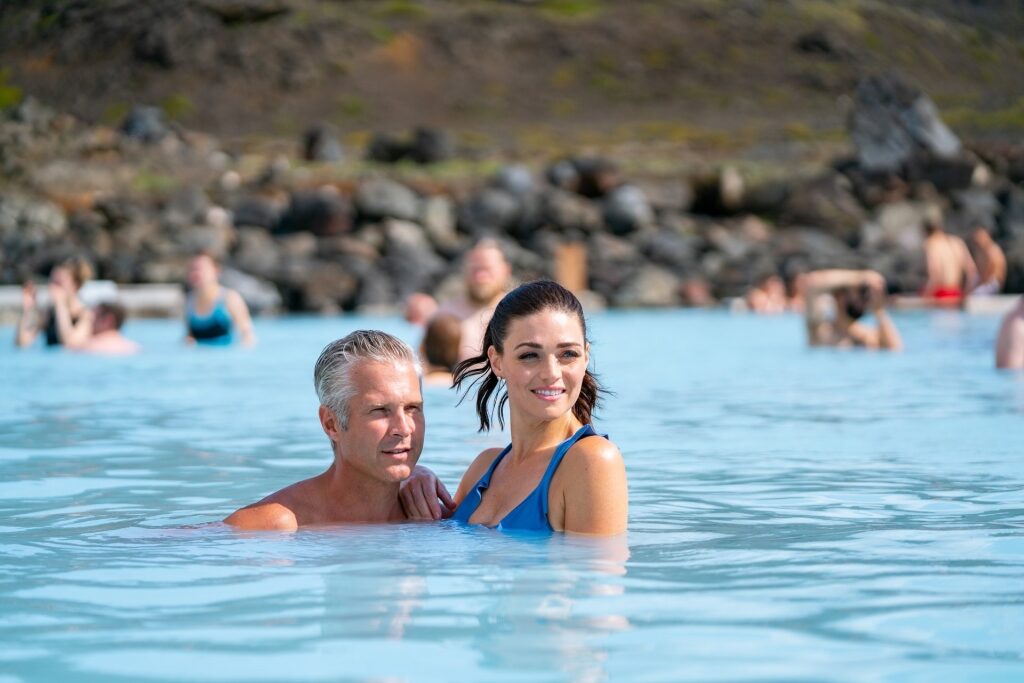
Lake Myvatn
Lake Myvatn is northern Iceland’s answer to the Blue Lagoon. Hot springs at the Myvatn Nature Baths make for an enjoyable experience in this region just an hour east of Akureyri. The inviting blue waters will warm you from the geothermal energy while you absorb the amazing panoramic views.
Known as one of the best lakes in Europe, Lake Myvatn is in an area rich with natural attractions and also part of the famous Diamond Circle, which consists of the village of Húsavík, the Ásbyrgi canyon, and Dettifoss, a powerful waterfall.
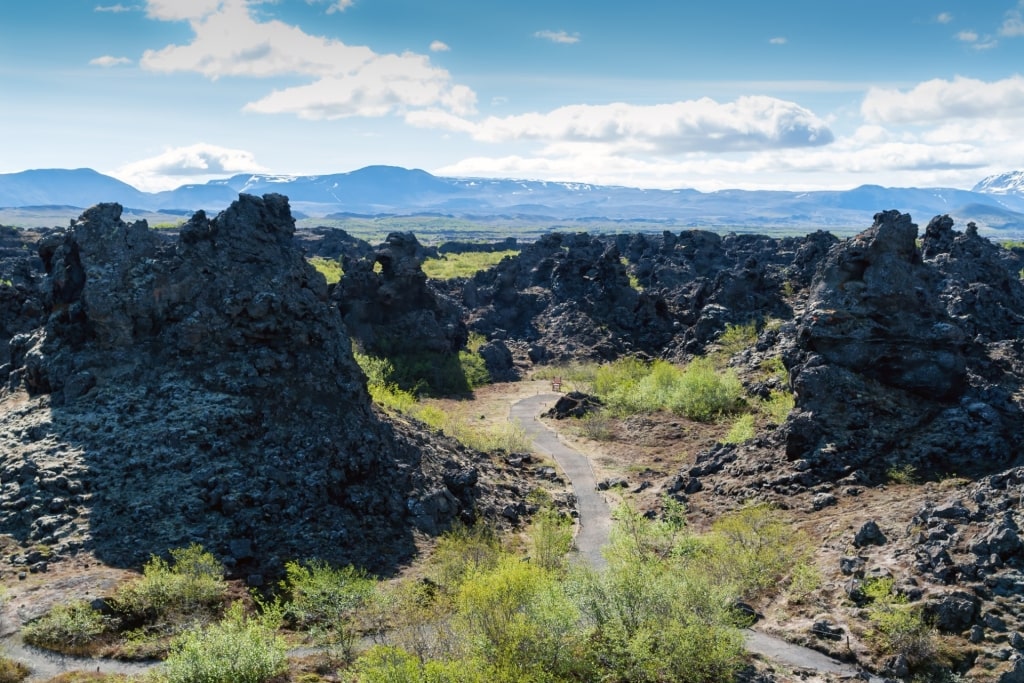
Dimmuborgir Rock Formations
Plenty of other natural wonders worth checking out are in and around the Lake Myvatn area. Dimmuborgir Rock Formations can be explored by a network of walking trails. Hverfjall Crater Mountain is a popular hike for awe-inspiring views of the surrounding terrain.
On the southern end of the lake you’ll find Skutustadagigar, pseudocraters which were formed by lava gas explosions that occurred from molten hot lava streamed over water holes in the wetlands. It’s also a great area for birdwatching.
Lake Graenavatn

Lake Graenavatn
An electric green crater lake on the Reykjanes Peninsula will have you scrambling for your camera as you take the short walk around the small body of striking water. You’ll notice the color intensifies toward the middle and deeper portion—almost 150 feet—of the lake, adding to its mysterious properties. For a bird’s-eye view of this geological phenomenon and other crater lakes, consider taking a helicopter tour.
After your visit to the lake, stop by the nearby rock formation of Brimketill, a coastal lava rock pool formed by years of erosion. Brimketill carries its own ancient folklore stories like many of the other natural attractions in Iceland.
Lake Kleifarvatn
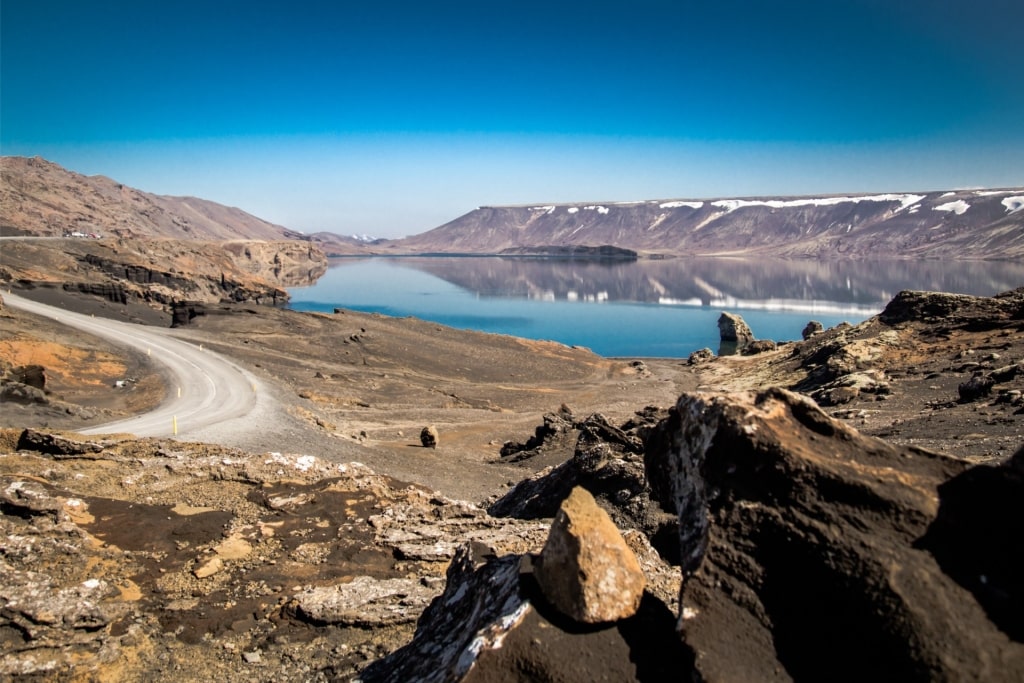
Lake Kleifarvatn
This six-square-mile lake is the largest body of water in the Reykjanes Peninsula in southwest Iceland. It’s also an easy day trip from Reykjavik, around a 40-minute drive south of the capital. At almost 320 feet deep, it’s one of the deepest in Iceland, with char thriving in the inky waters.
Visitors can hike around the lake, though some of the terrain is uneven so you’ll want to wear hiking boots. A short distance to the south of the lake is Seltún geothermal area, with the route between the two taking around 60 minutes to walk or five minutes by car.
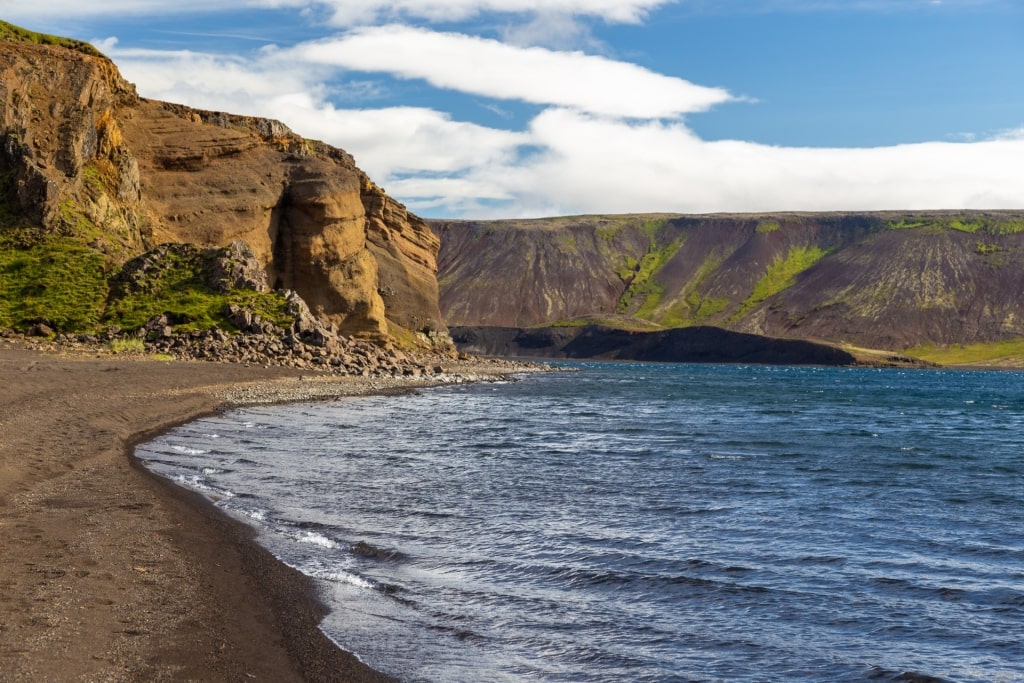
Lake Kleifarvatn
There are some impressive viewpoints from the lake where you can capture a photograph of Iceland’s nature, with serrated mountains and rocky, moss-covered lava fields all around.
There are no bathroom facilities or places to buy essentials, such as snacks and water, so carry these with you to enjoy as you soak in the views.
Read: What to Pack for Iceland
Coastal Wonders
Eyjafjörður Fjord
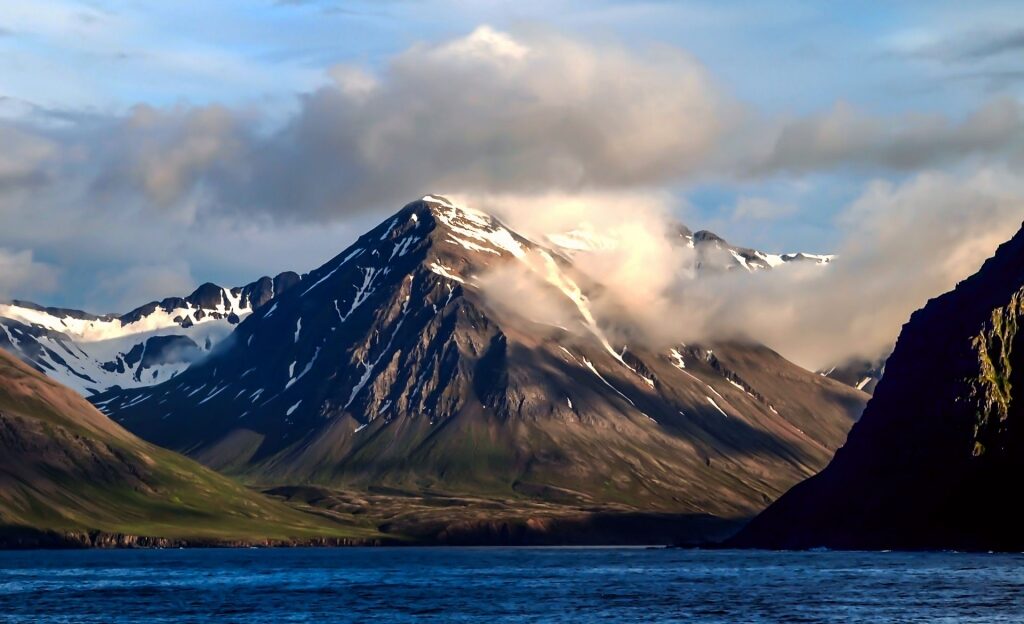
Eyjafjörður Fjord
Northern Iceland is home to the city of Akureyri, referred to as the “capital of the north” and a huge whale-watching destination. The city is situated at the base of Eyjafjörður.
Exploring the scenic fjord region exposes you to some of the best mountains in Iceland for hiking and biking adventures, fishing, and whale-watching excursions with quaint fishing villages in between. Godafoss—Waterfall of the Gods—is nearby as well if you’re looking to venture a bit further east of Akureyri to marvel at its natural beauty.
Summer in Iceland brings opportunities for roaming the land on foot late into the evening, lit by the midnight sun via the myriad of hiking trails. Since the fjord is a less-traveled destination in north Iceland, you’ll get to experience pristine, untouched landscapes.
Grimsey Island
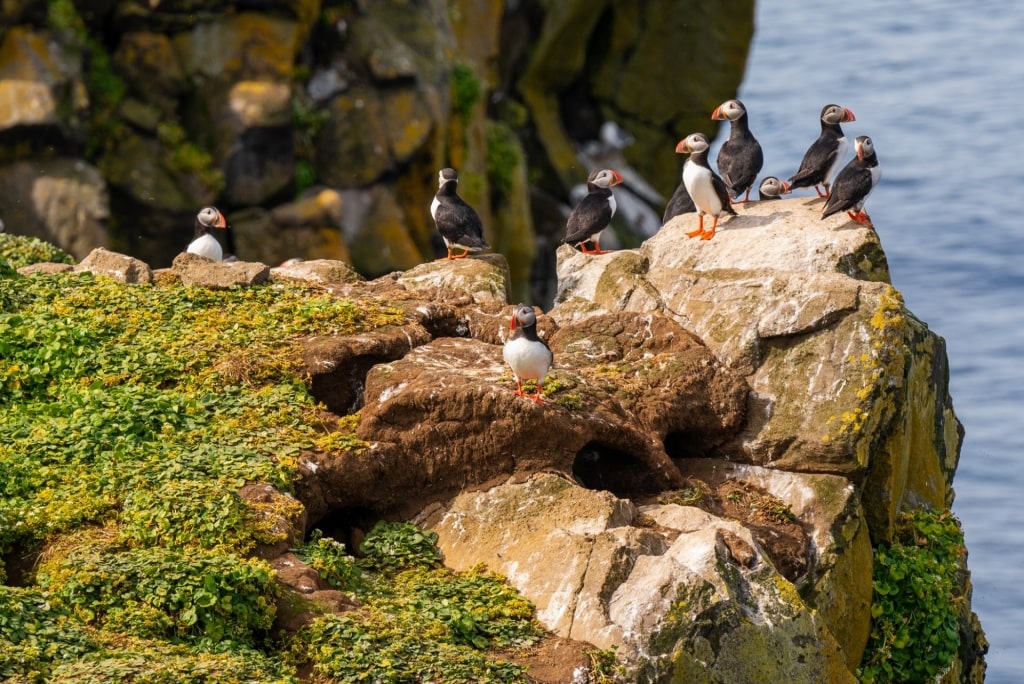
Grimsey Island
If seeing puffins in the wild is on your bucket list, then visiting Grimsey Island should be, too. This spot of land off of Iceland’s northern coast is close to the Arctic Circle and steeped in history. Visit the 800-year-old church, take in the picturesque harbor views, join a boat tour, and spend some time bird-watching.
Other than the majestic puffin, it’s possible to view other cliff-nesting birds like the murre, razorbill, and the black-legged kittiwake, especially from April until August in Iceland.
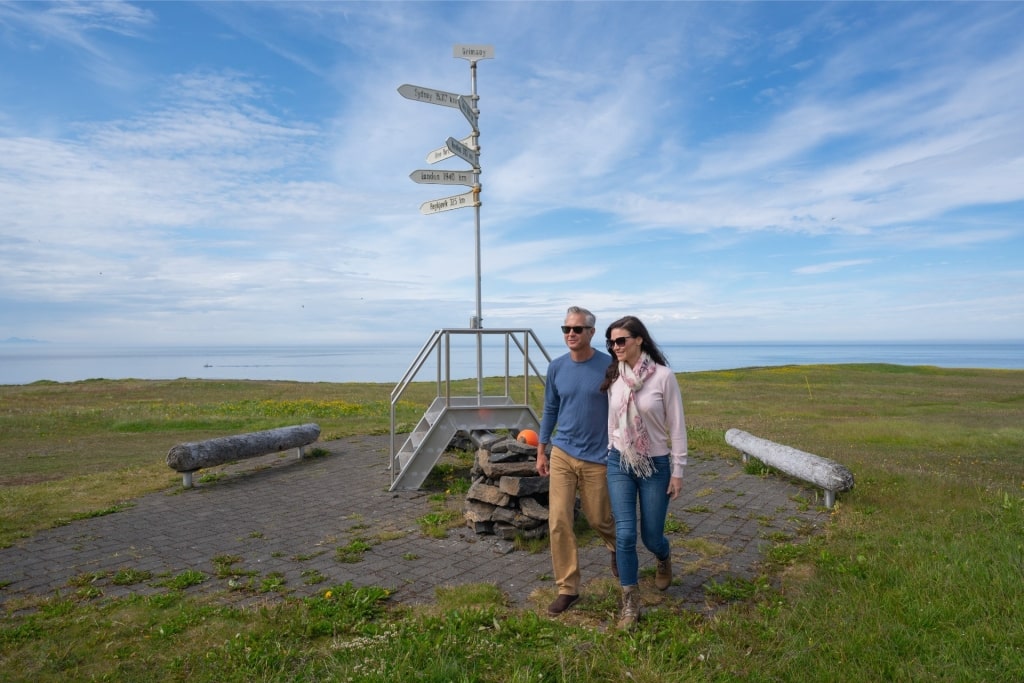
Grimsey Island
If you’re looking to explore on foot, hiking trails skirt the coast and ramble through the small village, Sandvik, offering expansive views. For a postcard-perfect sight, visit the bright yellow lighthouse that resides on the southern part of the island.
After an unforgettable hike, immersed in Icelandic nature, enjoy a coffee and a cookie at the village café and pick out a thick knitted sweater from the souvenir store to take home.
Hornstrandir Nature Reserve
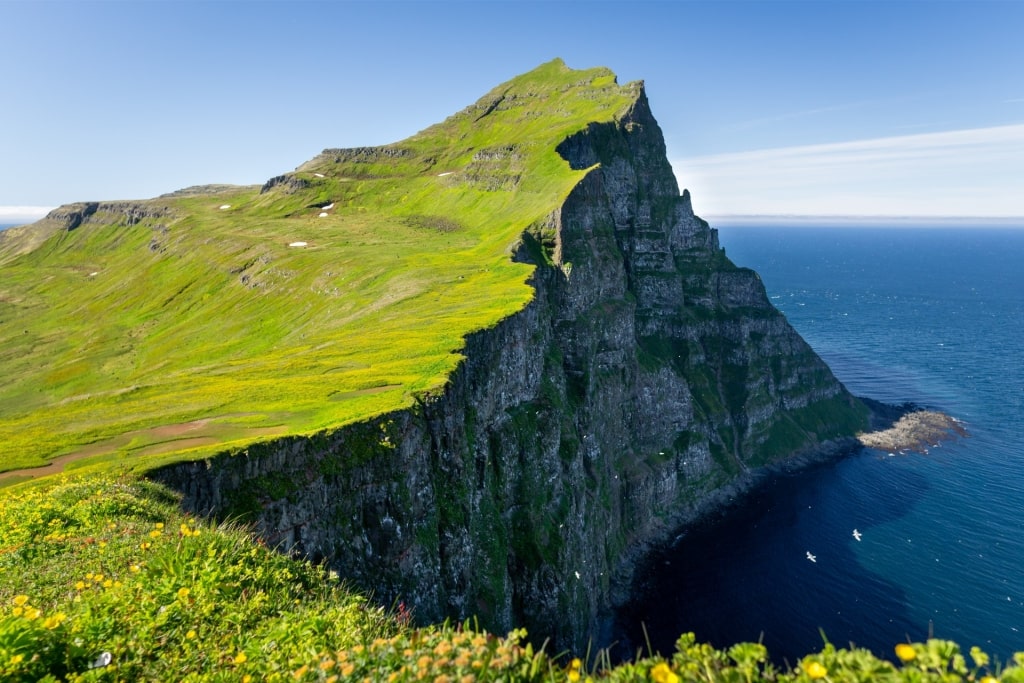
Hornstrandir Nature Reserve
Hornstrandir Nature Reserve is well worth a visit by boat from Isafjordur to look for elusive Arctic foxes and soak in the glorious Icelandic nature of the wild northwest.
Uninhabited since the 1950s, when a single, small community left, Hornstrandir features hulking sea cliffs carpeted in green that reach 1,640-feet high.
With plenty of space to feed and breed, birds love it here, including golden plovers and northern fulmars. Spot as many as you can, while wandering the eerie abandoned village and soaking in the fresh north Atlantic breeze.
Read: Iceland Travel Tips
FAQs About Iceland’s Nature
What is the best season to explore Iceland’s nature?
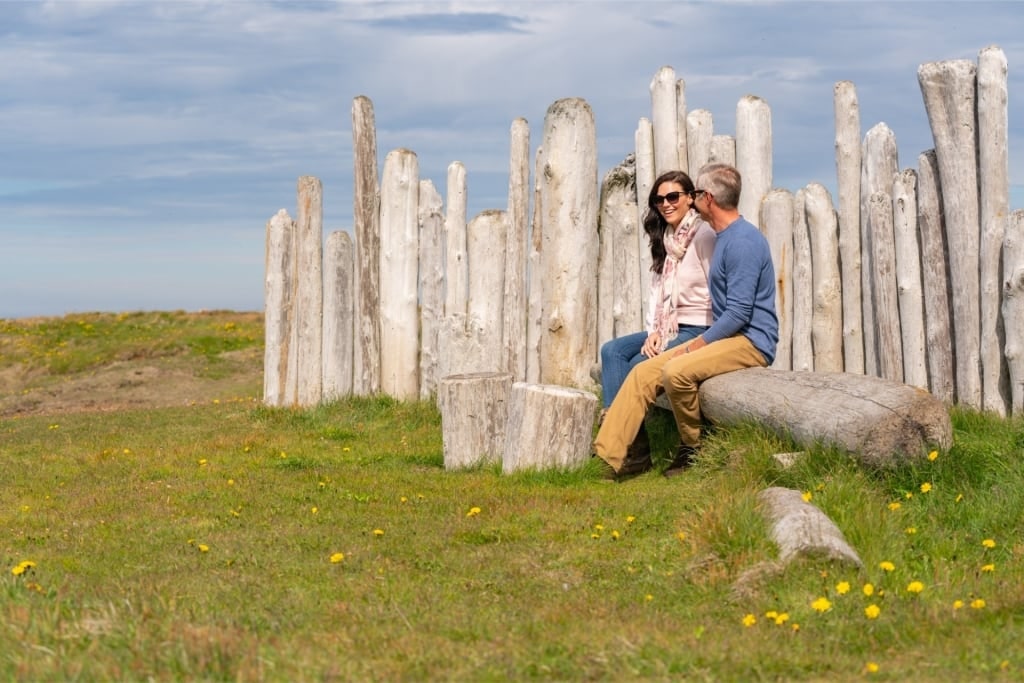
Grimsey Island
The best season to explore Iceland’s nature is summertime. During this period, there are long stretches of daylight, particularly around the summer solstice in June, when the sun doesn’t set.
During summer in Iceland, visitors will have ample opportunity to witness everything from breathtaking glaciers to black-sand beaches, and wildlife such as puffins, whales, and Arctic foxes. Waterfalls are at their most powerful, when glacial meltwater contributes to the powerful flow of water, and mountains that are often snow covered during winter are easier to hike.
Is Iceland good for hiking and outdoor adventures?
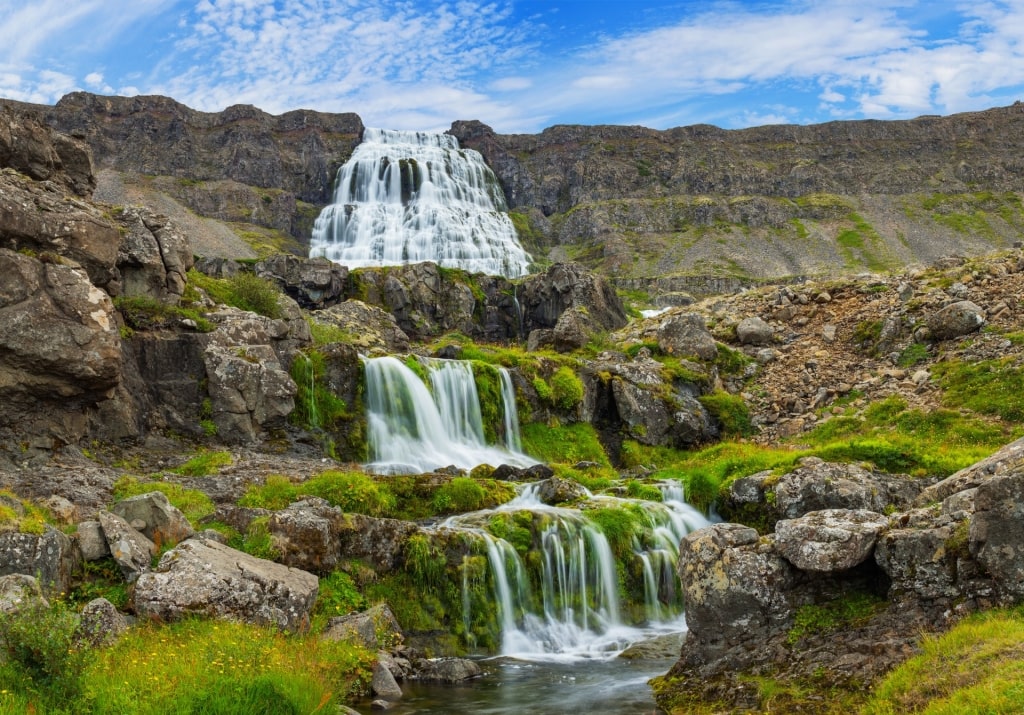
Dynjandi Waterfall
Iceland is one of the best places in the world for hiking and outdoor adventures. As well as its dramatic and varied terrain, travelers will typically find well-maintained and signposted trails to follow.
Just one example is Dynjandi waterfall in the Westfjords. You can reach it via Route 60 from Isafjordur, which takes around 50 minutes. There is a parking lot with chargers for electric vehicles and a well-marked gravel path that leads right to the foot of Dynjandi. Though the waterfall is close enough that it’s visible from the parking lot, it’s helpful to have these signs in place with information on the area, including the smaller waterfalls that lead to Dynjandi.
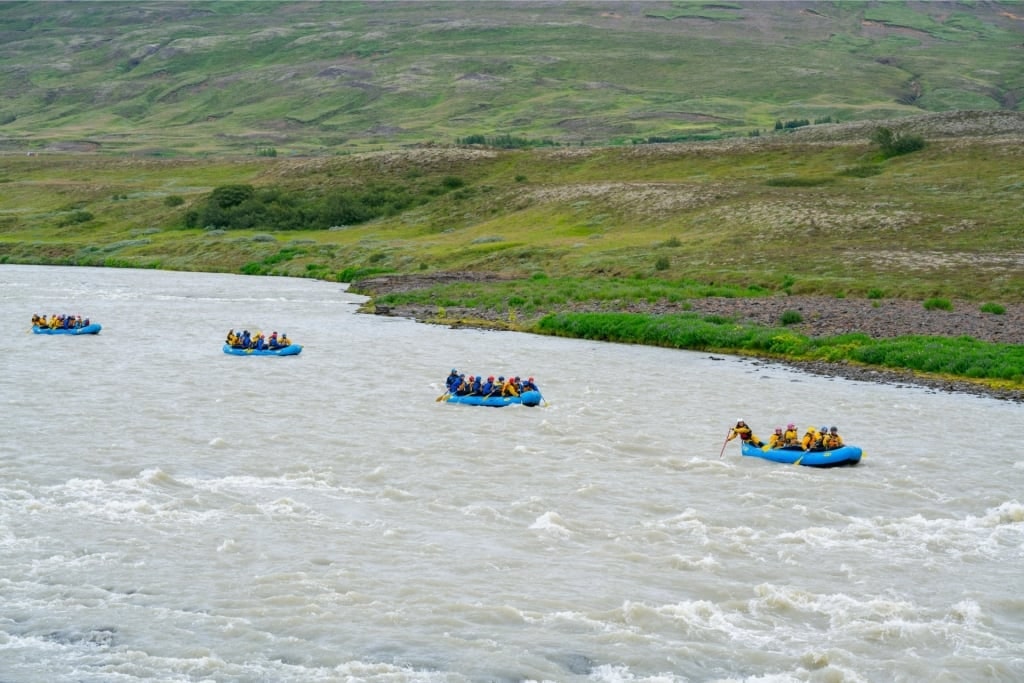
Hvita River
What makes Iceland such a thrilling place for outdoor adventures is its diverse landscapes. There are vast glaciers, soaring mountains, dramatic beaches, fast-moving rivers, and serene lakes, plus hot springs and tall sea cliffs.
Can I visit glaciers without a guide?

Langjokull Glacier
Travelers can visit glaciers in Iceland without a guide if simply just viewing them at designated viewpoints. Taking part in a glacier activity—hiking, climbing, or entering an ice cave that’s been carved into the glacier—should only be done with an experienced guide.
Only licensed glacier guides with the correct equipment, including ropes, crampons, ice axes, and a GPS can safely lead ice cave tours, glacier hikes, and snowmobiling, and glacier climbing.
Can I swim in natural hot springs in Iceland?
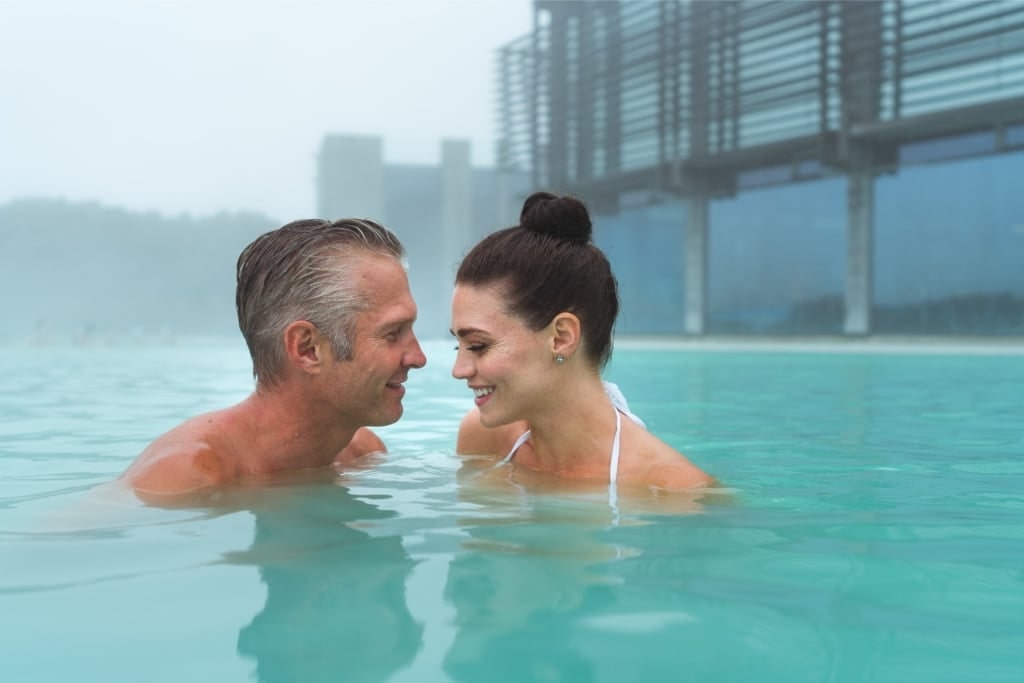
Blue Lagoon
You can absolutely swim in natural hot springs in Iceland. In fact, it’s one of the best things to do to immerse yourself in Icelandic nature. For a truly natural experience, you can swim in Hellulaug, a small coastal hot pool in the Westfjords, around 55 miles south of Isafjordur and 19 miles south of Dynjandi.
For more facilities, opt for one of Iceland’s many geothermal spas that tap into Iceland’s geothermal activity, including the most famous, Blue Lagoon, and the most central to Reykjavik, Sky Lagoon.
What makes Iceland’s waterfalls unique?
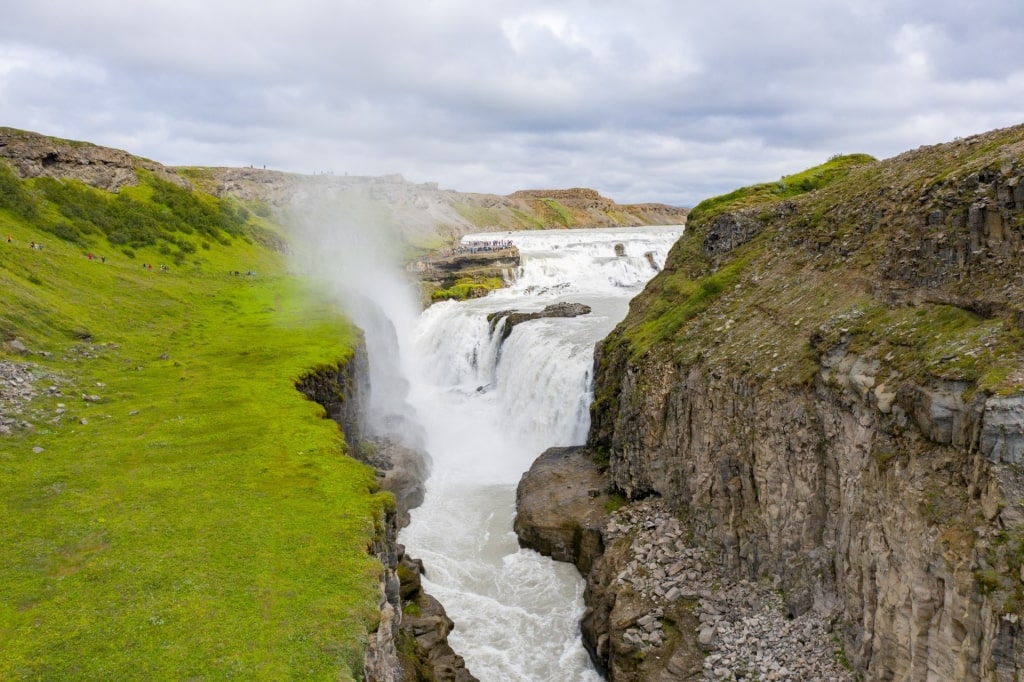
Gullfoss
Iceland has thousands of waterfalls and they are all unique in their size, volume, geology, and ferocity. Some are unnamed and trickle down Icelandic fjords and hillsides, while others have been written about in guidebooks and make the cover of postcards, thundering into canyons and rapid rivers.
Travelers will find waterfalls across the breadth of Iceland, with many fed by the glacial meltwater from the Vatnajökull and Langjökull icecaps.
The shape of waterfalls in Iceland make them unique, too. Some are shaped like a horsetail, narrow in width from top to bottom, while others spread over rockfaces, their foaming spray resembling a bride’s veil.
What type of wildlife can be seen in Iceland?
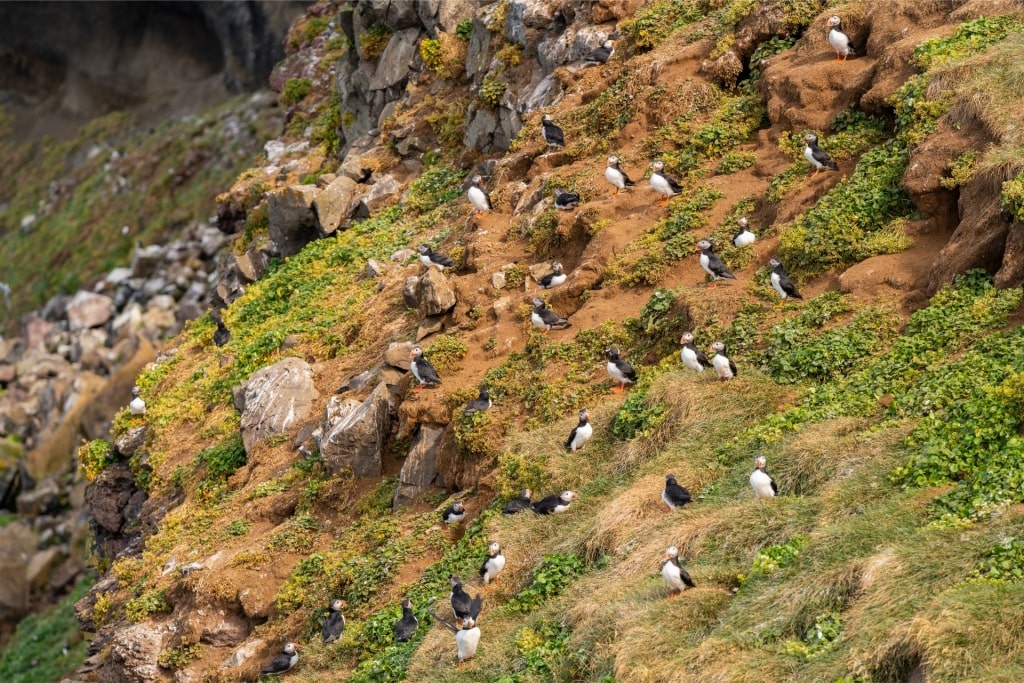
Puffins
Iceland is known for its exhilarating wildlife, particularly in summer when migratory birds descend on this north Atlantic island in their droves. Between April and early August, visitors can expect to see Atlantic puffins, whooper swans, Arctic terns, black guillemots, and common eiders among the bird life.
Gaze out to the ocean or join a sealife boat trip and there is every chance of spotting a raft of marine life. Minke, humpback, pilot, sperm, and even blue whales can be seen, especially around Akureyri, Reykjavík, and Snæfellsnes. Seals, harbor porpoises, and bottlenose dolphins are common, too.

Whale-watching in Akureyri
Large ocean mammals are here because of the rich waters—filled with salmon, cod, Arctic char, herring, and brown trout.
On land, though elusive, gorgeous Arctic foxes—Iceland’s only native animal and mostly found in Hornstrandir Nature Reserve in the far northwest—can be spotted, as well as Icelandic horses and reindeer.
Are Iceland's natural attractions open year-round?
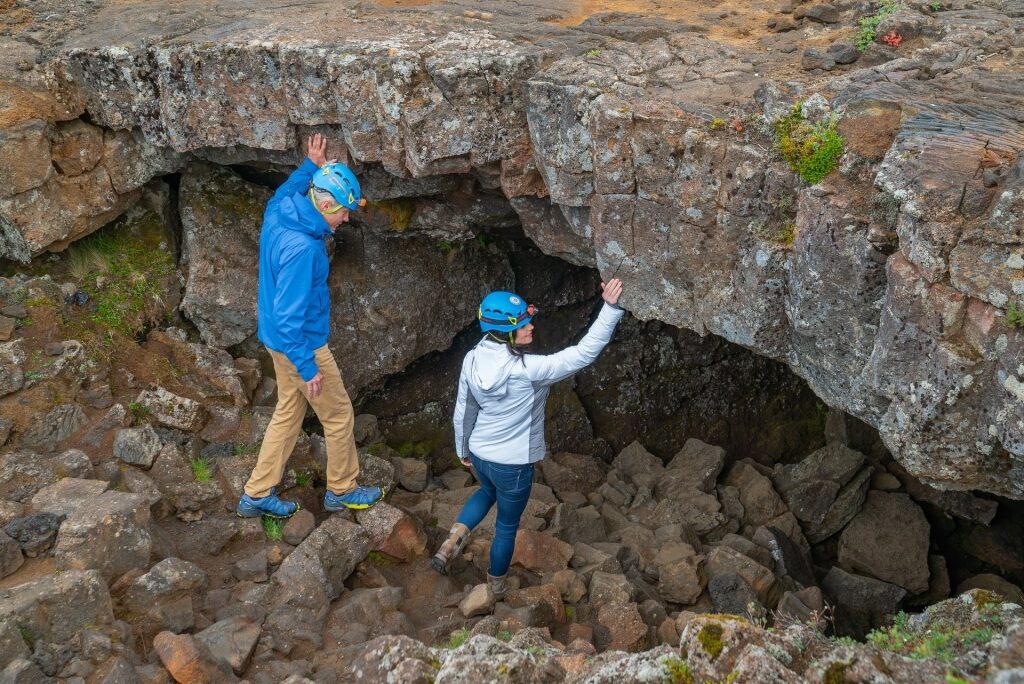
Thingvellir National Park
While most of Iceland’s natural attractions are open year-round, accessibility changes and, particularly from late fall through to early spring, some roads and mountains become impassable.
The weather is cold, often with snow and ice, during Iceland’s long winter months. Because of this, the best time to explore Iceland’s natural attractions is summertime, when the weather is milder, waterfalls thunder and hiking, biking, and kayaking are most enjoyable.
What are the most scenic places in Iceland for nature photography?
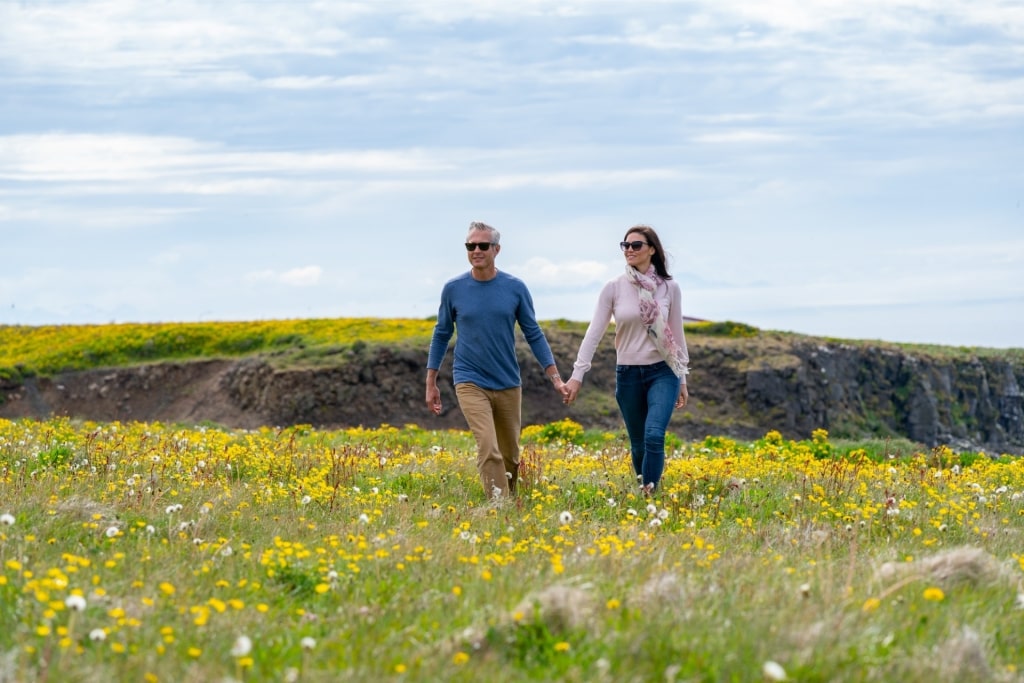
Grimsey Island
Glaciers, lakes, mountains, waterfalls, and fjords are among the best places in Iceland for nature photography. Summer is a wonderful time to capture wildflower meadows and coastal birdlife.
Specifically, Reykjanes Peninsula Geothermal Area, points on the Golden Circle and Ring Road Routes, Snaefellsjökull National Park, and the Westfjords all offer dramatic, and scenic places for nature photography.
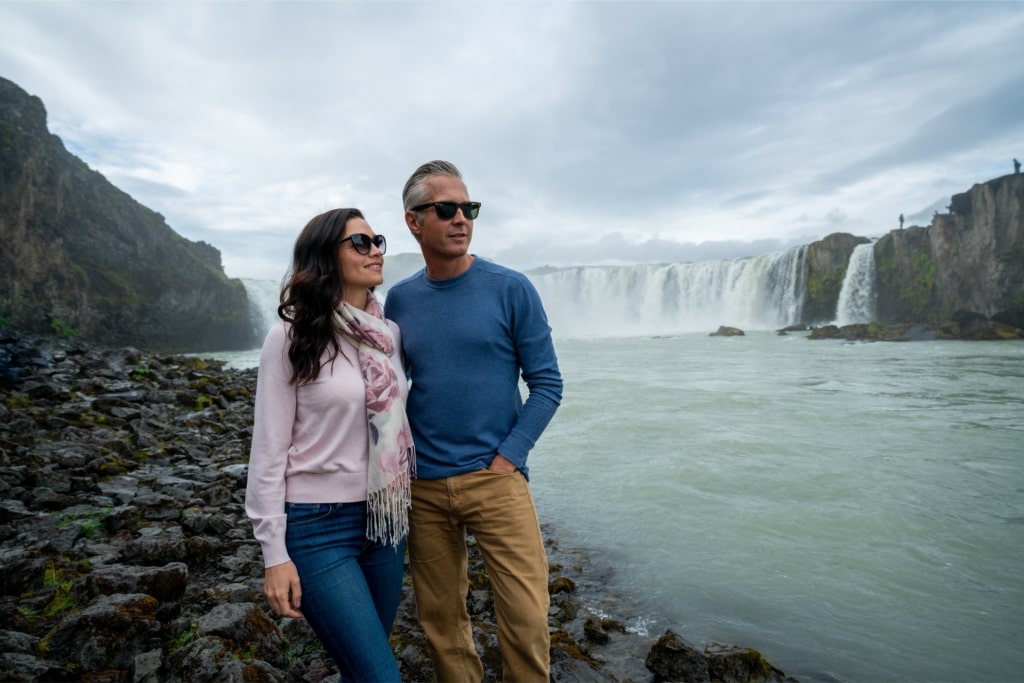
Godafoss
Ready to experience some of the top natural attractions in the Land of Fire and Ice? Browse Celebrity’s cruises to Iceland and book your next extraordinary adventure today.
